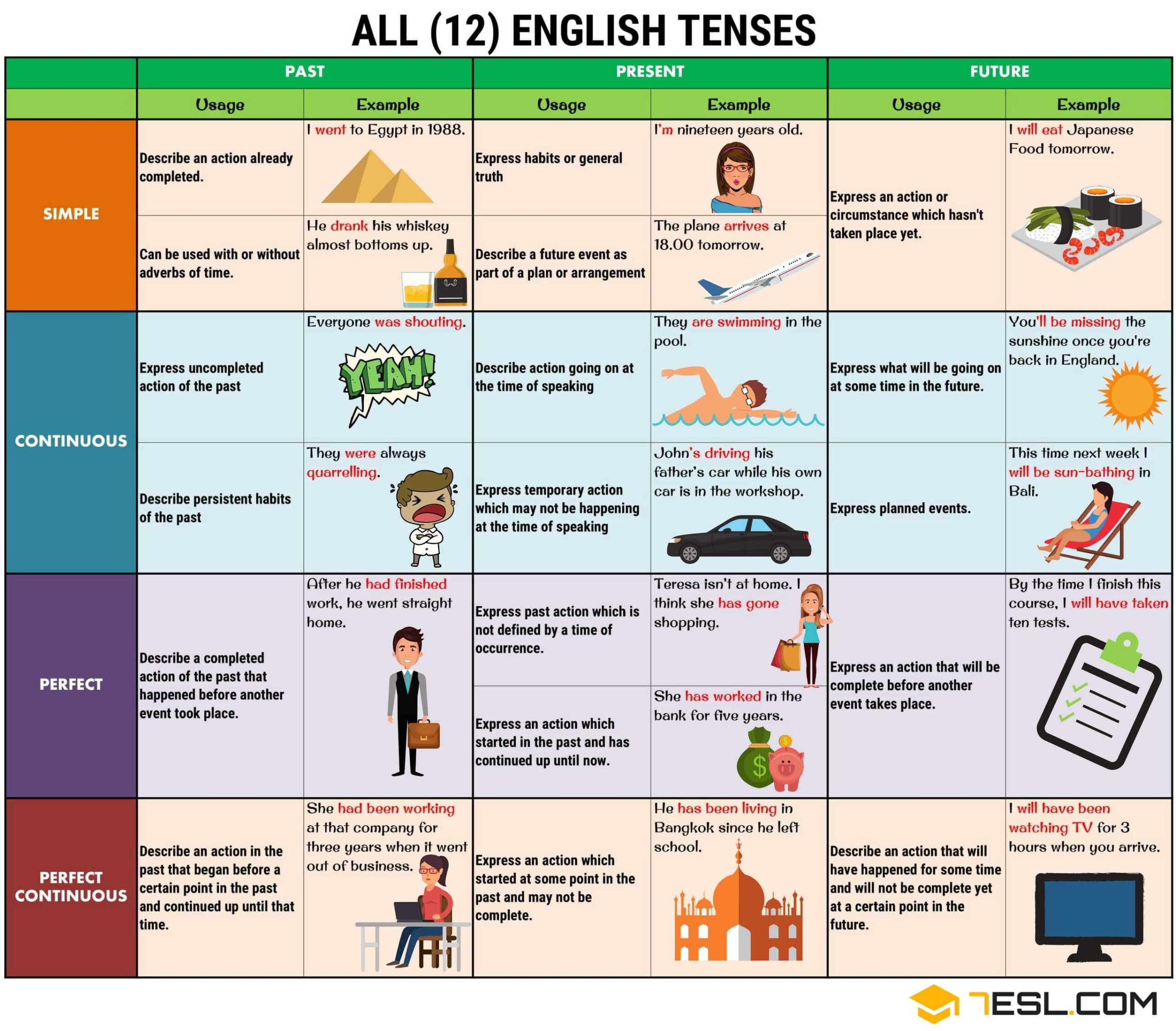Understanding verb tenses is essential for effective communication in English. Verbs convey the time at which an action takes place, whether in the past, present, or future. By mastering verb tenses, you can accurately describe events, actions, and conditions in various contexts.
In English, there are 12 verb tenses that are commonly used. Each tense has a specific structure and usage, which can sometimes be confusing for non-native speakers. However, with practice and examples, you can improve your understanding and use of verb tenses.
Verb Tenses Explained with Examples
1. Present Simple Tense:
The present simple tense is used to describe general truths, habits, and routines. Example: She works as a teacher.
2. Past Simple Tense:
The past simple tense is used to talk about completed actions in the past. Example: He visited Paris last summer.
3. Present Continuous Tense:
The present continuous tense is used to describe actions that are happening at the moment of speaking. Example: They are watching a movie right now.
4. Past Continuous Tense:
The past continuous tense is used to talk about actions that were in progress at a specific time in the past. Example: I was studying when the phone rang.
5. Future Simple Tense:
The future simple tense is used to express future plans or predictions. Example: We will meet at the cafe tomorrow.
Understanding and using verb tenses correctly can enhance your overall English language skills. By practicing with examples and paying attention to the context in which each tense is used, you can improve your communication and writing abilities.
In conclusion, verb tenses play a crucial role in conveying accurate information about the timing of actions and events. By mastering the various verb tenses and practicing with examples, you can become more proficient in using English effectively in different situations.
